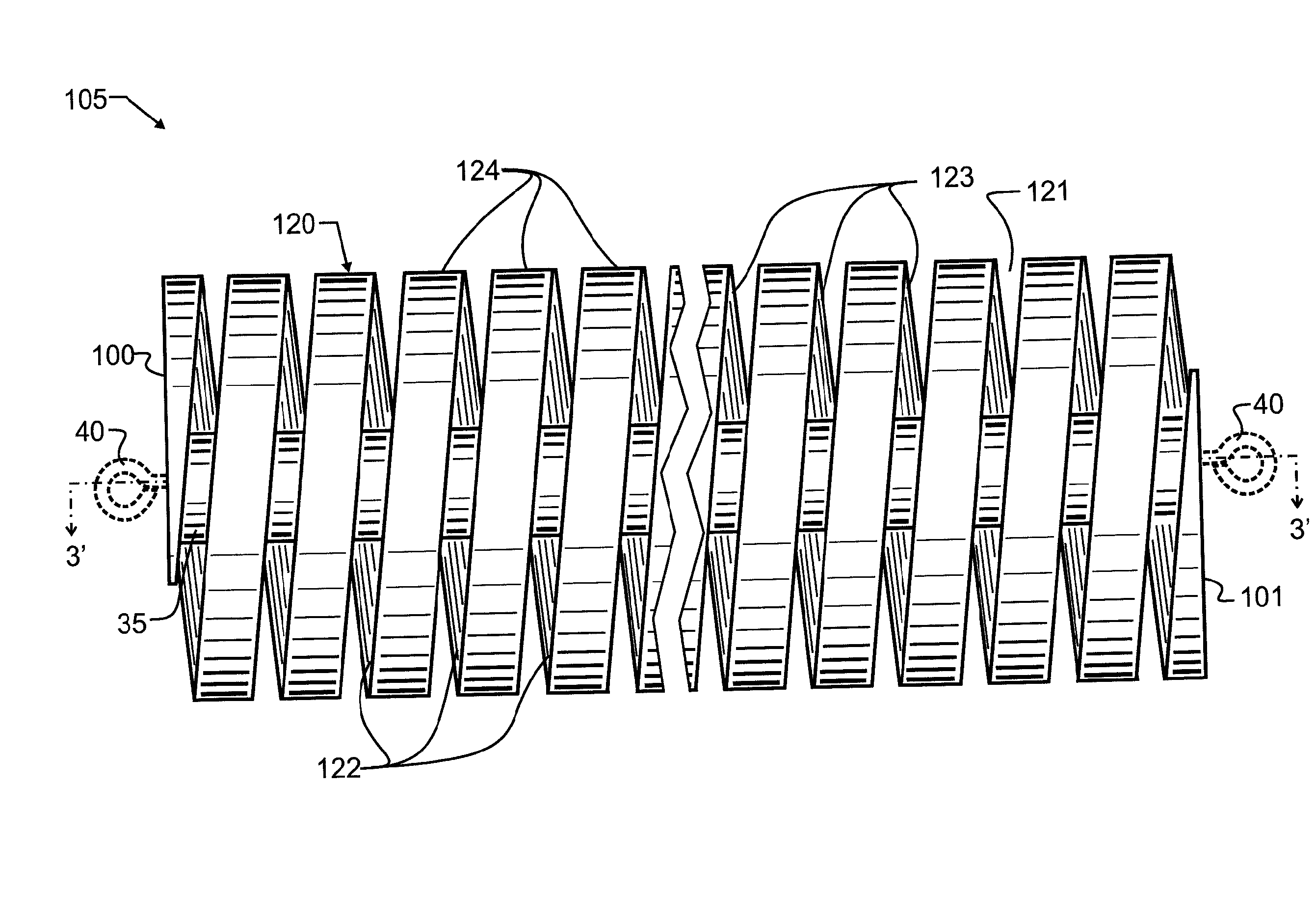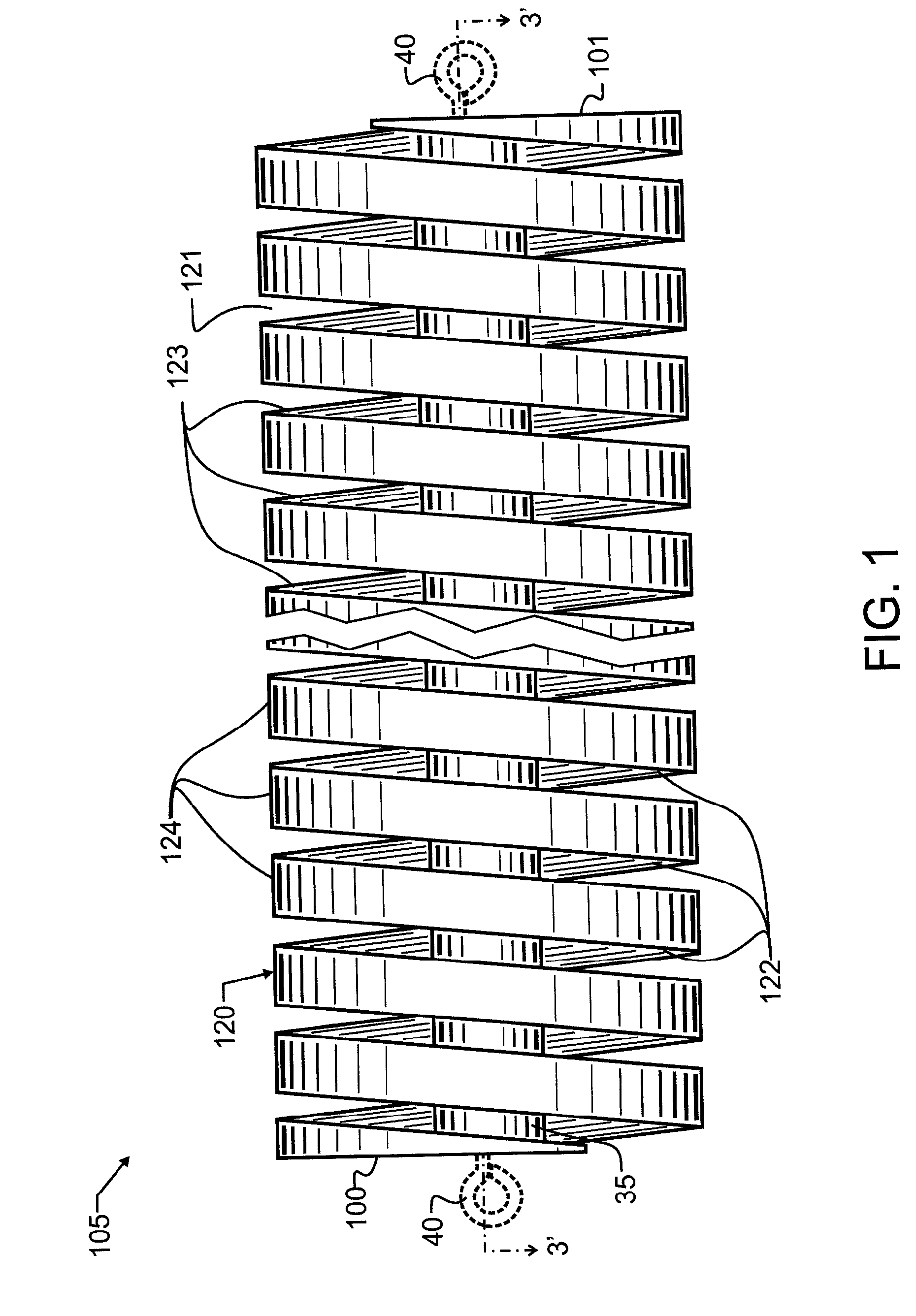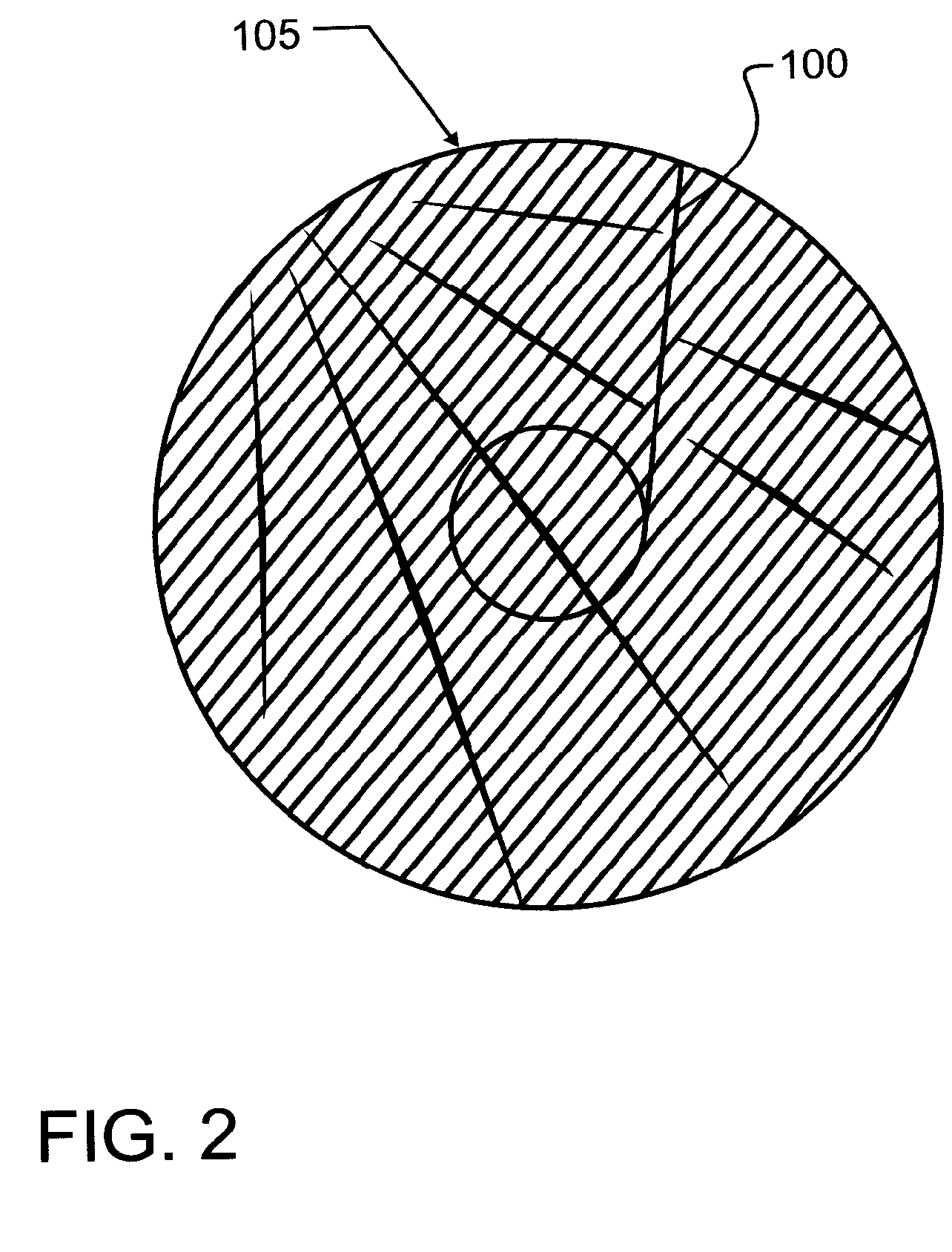Beverage infusion spiral and methods of making and using the same
a technology of infusion spiral and beverage, which is applied in the field of liquid treatment, can solve the problems of not being able to achieve effective laboratory synthesis, not being able to use laboratory processes to compose or manipulate these compounds and still produce desired products, and being too complex for effective laboratory synthesis. , to achieve the effect of reducing the amount of time required for wine ageing, and being economical
- Summary
- Abstract
- Description
- Claims
- Application Information
AI Technical Summary
Benefits of technology
Problems solved by technology
Method used
Image
Examples
Embodiment Construction
[0029]The following disclosure is provided in accord with the requirements of the statutes to render these preferred, alternative and other embodiments of the present invention readily apparent to those skilled in the art.
[0030]As shown in FIGS. 1 and 2, the preferred embodiment infusion spiral 105 is illustrated. Infusion spiral 105 may be of any length and diameter, and has opposite ends or termini 100, 101. A core 35 extends from one terminus 100 towards the other terminus 101, and will be designed to have adequate diameter and cross-section throughout to provide sufficient mechanical strength for an intended application. A single spiral 120 extends from around core 35.
[0031]In this preferred infusion spiral 105, spiral 120 is continuous, extending from a first terminus 100 of infusion spiral 105 to the second terminus 101, though it will be apparent that with other manufacturing technique it may be possible to manufacture a discontinuous spiral, such as by pulsing a laser or by ...
PUM
| Property | Measurement | Unit |
|---|---|---|
| length | aaaaa | aaaaa |
| surface area | aaaaa | aaaaa |
| compositions | aaaaa | aaaaa |
Abstract
Description
Claims
Application Information
 Login to View More
Login to View More - R&D
- Intellectual Property
- Life Sciences
- Materials
- Tech Scout
- Unparalleled Data Quality
- Higher Quality Content
- 60% Fewer Hallucinations
Browse by: Latest US Patents, China's latest patents, Technical Efficacy Thesaurus, Application Domain, Technology Topic, Popular Technical Reports.
© 2025 PatSnap. All rights reserved.Legal|Privacy policy|Modern Slavery Act Transparency Statement|Sitemap|About US| Contact US: help@patsnap.com



